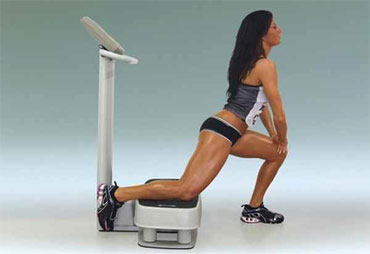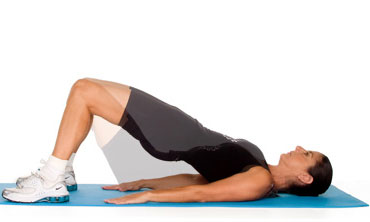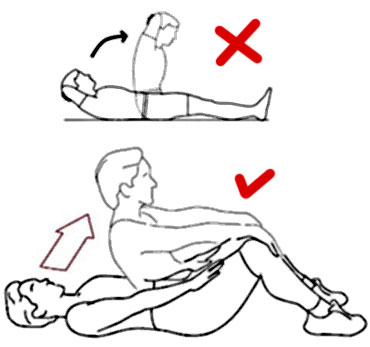 | « Back to article | Print this article |
Simple exercises to reduce back pain
Strengthening the muscles that support the spine with back exercises, abdominal exercises and buttock exercises can prevent, reduce and even eliminate back pain.
Strong abdominal muscles are as crucial as strong back muscles for supporting the low back and preventing low back pain. Strong quadriceps is important to prevent back injuries while lifting.
Shortened muscles can make the spine out of alignment and cause back pain. Stretching exercises lengthen shortened muscles and relieve back pain. Tight back muscles, tight buttock muscles, tight hamstrings or quadriceps can affect the alignment of the spine.
Stretching the back with exercises increases mobility of the joints of the spine. Strong and flexible muscles help maintain proper posture and prevent back strain.
Click NEXT for more
Simple exercises to reduce back pain
Motor control exercises, when performed in addition with other forms of therapy reduce pain and disability in patients with persistent low back pain.
In addition to reducing pain it helps to be physically more active and experience positive effects. It is also called as stabilisation exercises. These exercises help in regaining control over trunk muscles which support and control spine.
One of simple back exercises is pelvic tilt. Lie on your back with the feet flat and knees bent. Keep your legs together and cross the arms over the chest and then tilt the pelvis and push the low back to the floor.
Slowly lift the buttocks off the floor as far as you can without straining the muscles. Maintain the position for 5 seconds; slowly lower the buttocks back to the floor.
Click NEXT for more
Simple exercises to reduce back pain
The comphrensive programme for the back should include three elements: stretching, aerobics and strengthening exercises.
Stretching exercises are good to maintain the flexibility. It helps to relieve the pain. It prevents future injuries or pains. They help to avoid stiffness and weakness.
Stretching exercises is essential, but doing them correctly is important.
The spine comprising of muscles, ligaments, tendons, bones is designed to move side to side and front to back to carry the body weight. This can be achieved by stretching exercises of neck and back which help to keep muscles and ligaments flexible.
Click NEXT for more
Simple exercises to reduce back pain
Tips before starting stretching exercises:
- Stretching exercises must be done before or after a workout.
- They should be slow and consistent.
- Do not hold the stretch for more than 20 seconds.
- Take a deep breath. Do not hold the breath.
- Stretch on both sides of the body and for the same amount of time.
- Only do those exercises that do not aggravate back pain.
Click NEXT for more
Simple exercises to reduce back pain
Stretching exercises for back
These exercises helps keep the back muscles and other supporting tissues flexible and less prone to injury.
Back flexion stretch: Lie on your back. Pull both knees to the chest while simultaneously bending the head forward until comfortable stretch is felt in a balled-up position.
Knee to chest stretch: Lie on your back with the knees bent and both heels on the floor. Place both hands behind one knee and pull it to the chest until a comfortable stretch is felt.
Standing hamstring stretch: Stand with your feet flat on floor. Bend forward at the waist with arms hanging down and with legs straight. Try to touch your toes until a stretch is felt in the hamstring.
Aerobic exercises for back are walking, jogging, cycling, and swimming. These exercises condition the heart and other muscles, maintain health and speed recovery.
Click NEXT for more
Simple exercises to reduce back pain
Strengthening exercises
These exercises focus on back, abdomen and leg muscles. Knee to chest exercises, curl-ups, hamstring stretches are some of them. Some exercises can aggravate back pain. If you have low back pain avoid the following:- Straight leg sit-ups
- Bent leg sit-ups or partial sit-ups (curl-ups) when you have acute back pain
- Lifting both legs while lying on your back (leg lifts)
- Lifting heavy weight above the waist
- Toe touches while standing





